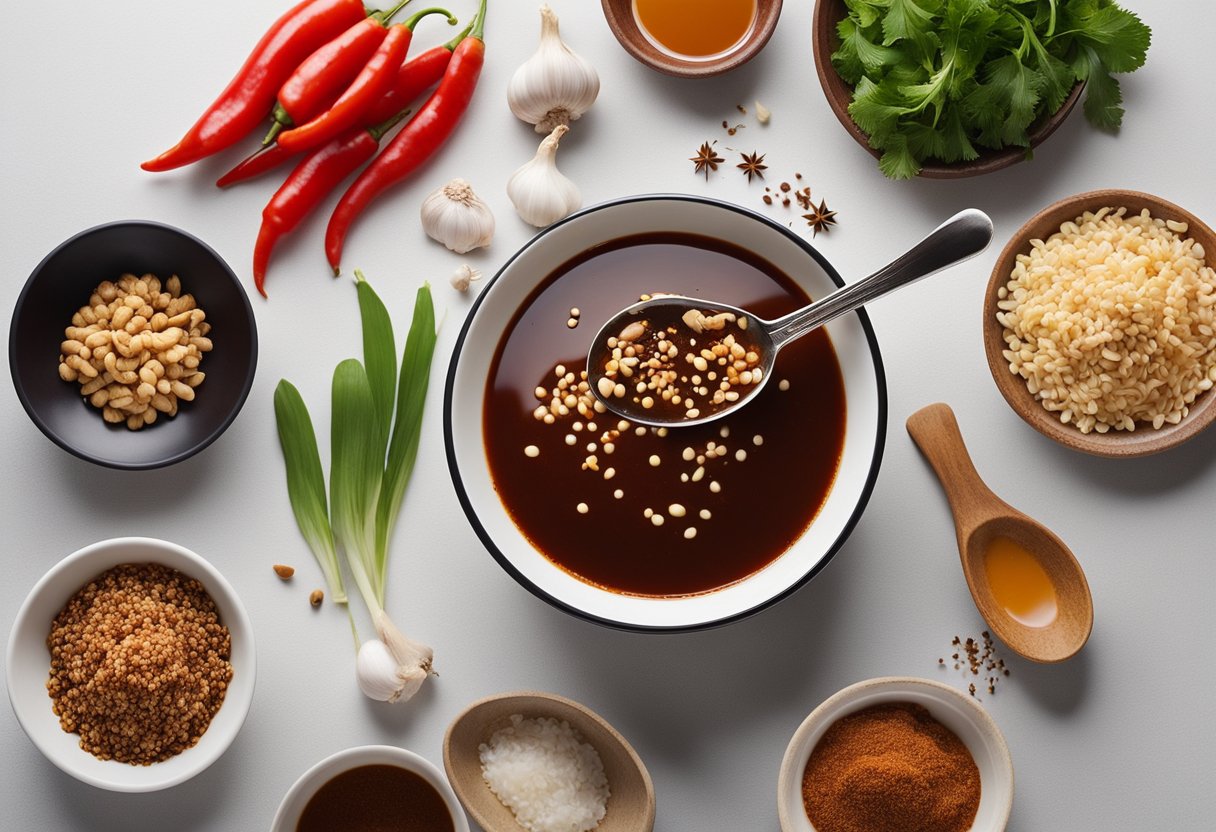Yangnyeom sauce is a Korean condiment that is gaining popularity around the world for its unique blend of sweet, savory, and spicy flavors. It is made from a combination of soy sauce, gochujang (Korean chili paste), garlic, ginger, and other seasonings. Yangnyeom sauce is commonly used as a dipping sauce for Korean fried chicken, but it can also add flavor to grilled meats, vegetables, and rice dishes.
Table of Contents
Making yangnyeom sauce at home is easy and requires only a few ingredients. The key to a good yangnyeom sauce is finding the right balance of flavors. Too much soy sauce or sugar can make the sauce too salty or sweet, while too much gochujang can make it too spicy. The recipe can be adjusted to suit individual tastes, but it is important to taste the sauce as you go to ensure that the flavors are balanced. With a little practice, anyone can make a delicious yangnyeom sauce at home.
History of Yangnyeom Sauce
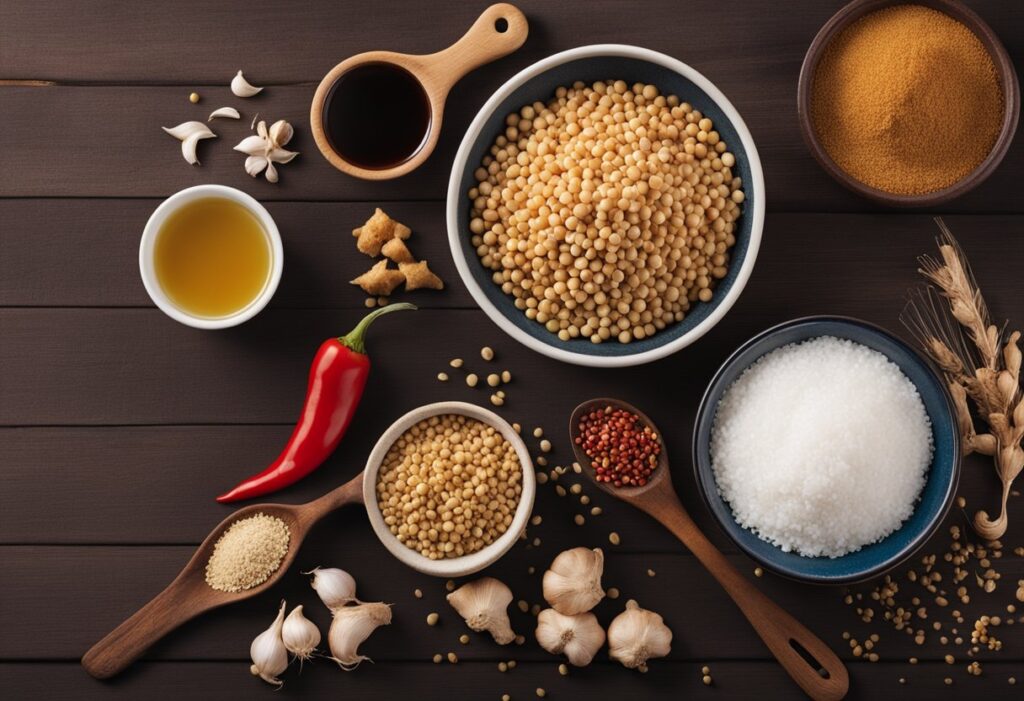
Yangnyeom sauce is a popular Korean condiment that is loved by many. The sauce is made from a combination of soy sauce, vinegar, sugar, garlic, ginger, and other ingredients. It is commonly used as a dipping sauce for Korean fried chicken, but it can also be used as a marinade or a glaze for various dishes.
The origin of yangnyeom sauce can be traced back to the Joseon dynasty in Korea. During this time, the sauce was made with soy sauce, vinegar, and red pepper powder. It was primarily used as a seasoning for meat dishes. Over time, the recipe evolved, and additional ingredients such as sugar, garlic, and ginger were added to create a more complex flavor.
In the 1960s, yangnyeom sauce gained popularity in South Korea as a dipping sauce for fried chicken. Since then, it has become a staple condiment in Korean cuisine and can be found in almost every Korean restaurant.
Today, yangnyeom sauce is not only popular in Korea but also in other parts of the world. Its unique flavor and versatility have made it a favorite among food enthusiasts. With the rise of Korean cuisine globally, it is expected that yangnyeom sauce will continue to gain popularity and become a household name.
Essential Ingredients
Gochujang
Gochujang is a crucial ingredient in making yangnyeom sauce. It is a spicy, fermented chili paste that is commonly used in Korean cuisine. The paste is made from a blend of red pepper powder, glutinous rice, fermented soybeans, and salt. Gochujang adds a unique depth of flavor and heat to the sauce.
Soy Sauce
Soy sauce is a staple ingredient in many Asian cuisines and is used in the preparation of yangnyeom sauce. It is made from fermented soybeans, wheat, salt, and water. Soy sauce adds a salty and savory flavor to the sauce.
Honey or Sugar
Honey or sugar is added to yangnyeom sauce to balance out the spiciness and saltiness of the other ingredients. Honey adds a sweet and floral flavor, while sugar adds a simple sweetness. It is important to note that the amount of honey or sugar added to the sauce should be adjusted according to personal taste.
Garlic
Garlic is a strong-flavored ingredient that adds a pungent and slightly sweet flavor to yangnyeom sauce. It is commonly used in Korean cuisine and is known for its health benefits. Garlic is also believed to have antibacterial and anti-inflammatory properties.
Sesame Oil
Sesame oil is a fragrant oil that is made from sesame seeds. It is commonly used in Korean cuisine and adds a nutty and slightly sweet flavor to yangnyeom sauce. Sesame oil is also rich in antioxidants and is believed to have anti-inflammatory properties.
In summary, the essential ingredients for making yangnyeom sauce are gochujang, soy sauce, honey or sugar, garlic, and sesame oil. These ingredients work together to create a complex and flavorful sauce that is perfect for marinating and dipping.
Optional Ingredients
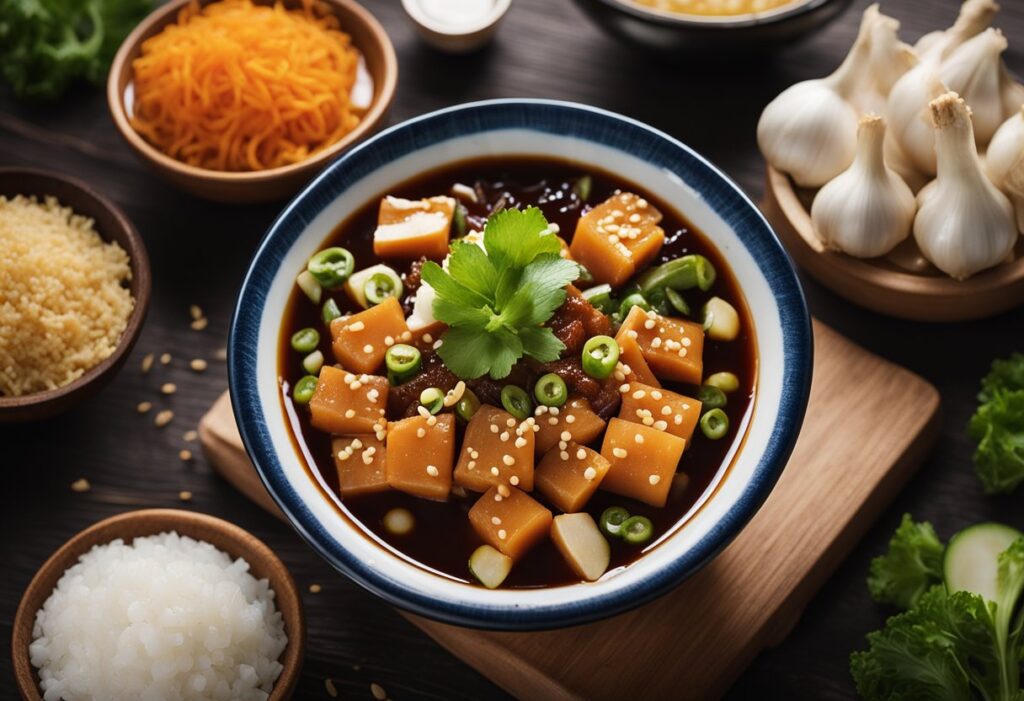
Apple or Pear Puree
For a slightly sweeter and fruitier flavor, apple or pear puree can be added to the yangnyeom sauce. Simply blend peeled and cored apples or pears until smooth, and mix in with the other ingredients. This works particularly well if you are serving the sauce with pork or chicken dishes.
Sesame Seeds
To add a nutty flavor and a bit of texture to the sauce, sesame seeds can be added. Toast the sesame seeds in a dry pan until golden brown and fragrant, then grind them in a mortar and pestle or a spice grinder. Mix the ground sesame seeds into the sauce before serving.
Green Onions
For a bit of freshness and crunch, chopped green onions can be added to the yangnyeom sauce. Simply slice the green onions thinly and mix them in with the other ingredients. This works particularly well if you are serving the sauce with grilled or roasted meats.
Rice Vinegar
If you prefer a tangier and more acidic sauce, rice vinegar can be added. Mix in a tablespoon or two of rice vinegar to the other ingredients to achieve the desired flavor. This works particularly well if you are serving the sauce with seafood dishes.
Overall, these optional ingredients can add a variety of flavors and textures to the yangnyeom sauce, allowing you to customize it to your personal preferences.
Preparation Steps
Mixing the Base
To make yangnyeom sauce, the first step is to mix the base ingredients together. The base ingredients typically include gochujang (Korean chili paste), soy sauce, rice vinegar, sugar, and minced garlic. The ingredients are mixed together in a bowl until they are well combined.
It is important to note that the ratio of each ingredient can be adjusted to suit personal taste preferences. Some people may prefer a sweeter sauce, while others may prefer a spicier sauce. Adjusting the ratio of sugar and gochujang can help achieve the desired flavor.
Adjusting Flavor
Once the base ingredients are mixed together, it is time to adjust the flavor. This can be done by adding additional ingredients such as honey, sesame oil, or ginger. These ingredients can enhance the flavor of the sauce and give it a unique taste.
It is important to taste the sauce as you add additional ingredients to ensure that the flavor is balanced. Too much of one ingredient can overpower the other flavors in the sauce.
Final Consistency
The final step in making yangnyeom sauce is to achieve the desired consistency. Some people prefer a thicker sauce, while others prefer a thinner sauce. To achieve a thicker consistency, cornstarch can be added to the sauce and cooked over low heat until it thickens. To achieve a thinner consistency, water can be added to the sauce.
Overall, making yangnyeom sauce is a simple process that can be adjusted to suit personal taste preferences. By following these preparation steps, anyone can make a delicious and flavorful yangnyeom sauce to accompany their favorite dishes.
Serving Suggestions
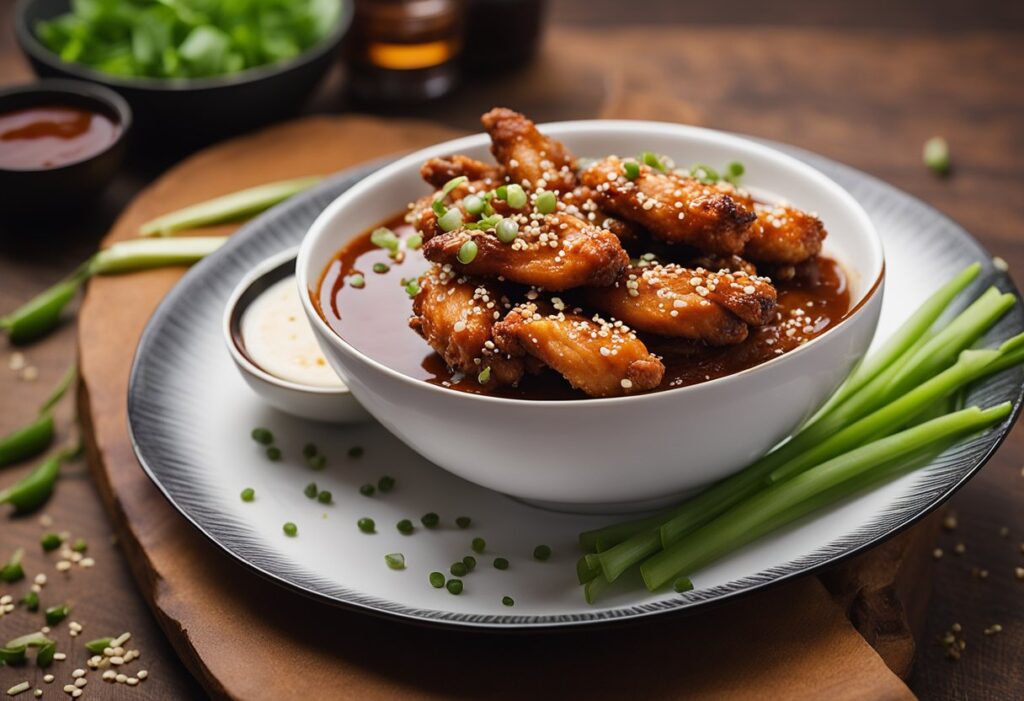
With Korean Fried Chicken
Yangnyeom sauce is the perfect accompaniment to Korean fried chicken. The sweet and spicy flavors of the sauce complement the crispy texture of the chicken, making it a popular choice for many Korean food enthusiasts. To serve, simply drizzle the sauce over the fried chicken or use it as a dipping sauce.
As a Marinade
Yangnyeom sauce can also be used as a marinade for meats such as chicken, pork, and beef. Simply coat the meat in the sauce and let it marinate for at least 30 minutes before grilling or baking. The sauce adds a delicious flavor to the meat and helps to tenderize it as well.
With Vegetables
Yangnyeom sauce can also be used as a sauce for vegetables such as carrots, cucumbers, and radishes. The sweet and spicy flavor of the sauce adds a delicious kick to the vegetables, making them a tasty and healthy snack. To serve, simply drizzle the sauce over the vegetables or use it as a dipping sauce.
Overall, yangnyeom sauce is a versatile and delicious sauce that can be used in a variety of ways. Whether you’re looking to add some flavor to your Korean fried chicken, marinate your meats, or spice up your vegetables, yangnyeom sauce is the perfect choice.
Storage and Shelf Life

Once prepared, yangnyeom sauce should be stored in an airtight container and refrigerated. It can be stored for up to two weeks without losing its flavor and texture.
It is important to note that the sauce may thicken in the refrigerator due to the cornstarch. To restore the sauce to its original consistency, simply add a small amount of water and mix well.
If you have leftover yangnyeom sauce that you are unable to consume within the two-week storage period, it can be frozen for up to three months. When ready to use, thaw the sauce in the refrigerator overnight and mix well before serving.
It is important to note that the texture and flavor of the sauce may be slightly altered after freezing and thawing. However, it will still be delicious and suitable for use in various dishes.
Nutritional Information
Yangnyeom sauce is a flavorful and versatile sauce that can be used to enhance the taste of many dishes. It is made with a combination of ingredients that provide a variety of nutrients. Here is a breakdown of the nutritional information for a typical yangnyeom sauce recipe:
Calories and Macronutrients
A 1 tablespoon serving of yangnyeom sauce contains approximately 25 calories. It also contains 0.6 grams of fat, 0.5 grams of protein, and 5 grams of carbohydrates. The sauce is low in calories and fat, making it a good option for those who are watching their weight.
Vitamins and Minerals
Yangnyeom sauce contains a variety of vitamins and minerals. It is a good source of vitamin C, which is important for immune system function and collagen production. It also contains vitamin B6, which is important for brain function and the production of red blood cells. In addition, yangnyeom sauce contains small amounts of calcium, iron, and potassium.
Sodium
One potential downside of yangnyeom sauce is its high sodium content. A 1 tablespoon serving contains approximately 260 milligrams of sodium, which is about 11% of the recommended daily limit. People who are on a low-sodium diet should be cautious when consuming yangnyeom sauce.
Overall, yangnyeom sauce is a flavorful and nutrient-rich sauce that can be enjoyed in moderation as part of a healthy diet.
Variations of Yangnyeom Sauce
Spicier Version
For those who like their food with a little extra heat, a spicier version of Yangnyeom sauce can be easily made by adding more gochujang or gochugaru to the recipe. Gochujang is a Korean fermented chili paste that adds a deep, complex flavor to the sauce. Gochugaru, on the other hand, is a Korean red pepper powder that adds a bright, spicy kick. By adjusting the amount of these ingredients, you can create a sauce that suits your taste preferences.
Sweeter Version
If you prefer a sweeter sauce, try adding honey or brown sugar to the recipe. These ingredients will balance out the spiciness of the sauce and add a subtle sweetness. You can adjust the amount of sweetener to your liking, but be careful not to add too much, as it can overpower the other flavors in the sauce.
Vegan Adaptation
For those following a vegan diet, Yangnyeom sauce can be adapted by using a vegan-friendly substitute for the fish sauce. Soy sauce or tamari are good options that will add a salty, umami flavor to the sauce. Additionally, you can use a vegan-friendly version of the gochujang or gochugaru, as some brands may contain animal products. By making these simple substitutions, you can enjoy a delicious vegan version of this popular Korean sauce.
Overall, Yangnyeom sauce is a versatile condiment that can be customized to suit a variety of tastes and dietary needs. With a few simple adjustments, you can create a sauce that perfectly complements your favorite Korean dishes.
Pairing with Dishes
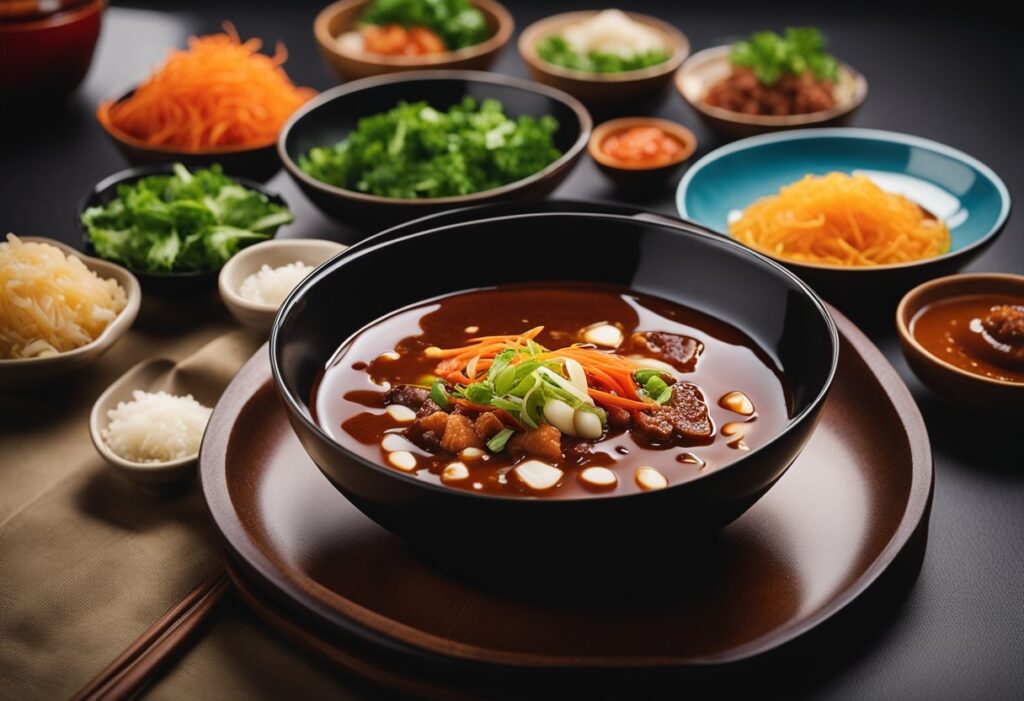
Traditional Korean Dishes
Yangnyeom sauce is a versatile condiment that can be paired with a variety of traditional Korean dishes. It is a popular accompaniment to grilled meats, such as bulgogi and galbi, as well as fried chicken and dak-galbi. The sweet and spicy flavor of the sauce complements the savory flavors of these dishes, adding an extra layer of complexity to the overall taste.
In addition to meat dishes, yangnyeom sauce can also be paired with vegetarian dishes, such as bibimbap and japchae. The sauce can be used as a dressing for these dishes, adding a burst of flavor and enhancing the overall taste.
Modern Fusion Cuisine
Yangnyeom sauce has also become a popular ingredient in modern fusion cuisine. Its unique flavor profile makes it an ideal ingredient for dishes that combine Korean and non-Korean flavors. For example, it can be used as a dipping sauce for French fries or as a topping for burgers.
In addition, yangnyeom sauce can be used to add flavor to non-traditional Korean dishes, such as tacos and pizza. Its sweet and spicy flavor pairs well with a variety of ingredients, making it a versatile ingredient in modern fusion cuisine.
Overall, yangnyeom sauce is a delicious and versatile condiment that can be paired with a variety of traditional Korean dishes and modern fusion cuisine. Its unique flavor profile adds a burst of flavor to any dish, making it a must-try for anyone who loves Korean cuisine.
Food Safety Considerations
When preparing yangnyeom sauce, it is important to keep in mind certain food safety considerations to ensure that the sauce is safe to consume. Here are some tips to follow:
- Wash hands and utensils: Before handling any ingredients, make sure to wash your hands thoroughly with soap and warm water. Also, wash all utensils, cutting boards, and other equipment that will come into contact with the ingredients.
- Use fresh ingredients: Make sure to use fresh ingredients, especially the vegetables and herbs, to avoid any risk of contamination.
- Store properly: Store the yangnyeom sauce in a clean, airtight container in the refrigerator. It is best to consume the sauce within a few days of preparation to ensure freshness.
- Avoid cross-contamination: To avoid cross-contamination, use separate cutting boards and utensils for raw meat and vegetables. Also, make sure to wash your hands and utensils thoroughly after handling raw meat.
- Cook meat thoroughly: If you are using meat in your yangnyeom sauce, make sure to cook it thoroughly to kill any harmful bacteria.

